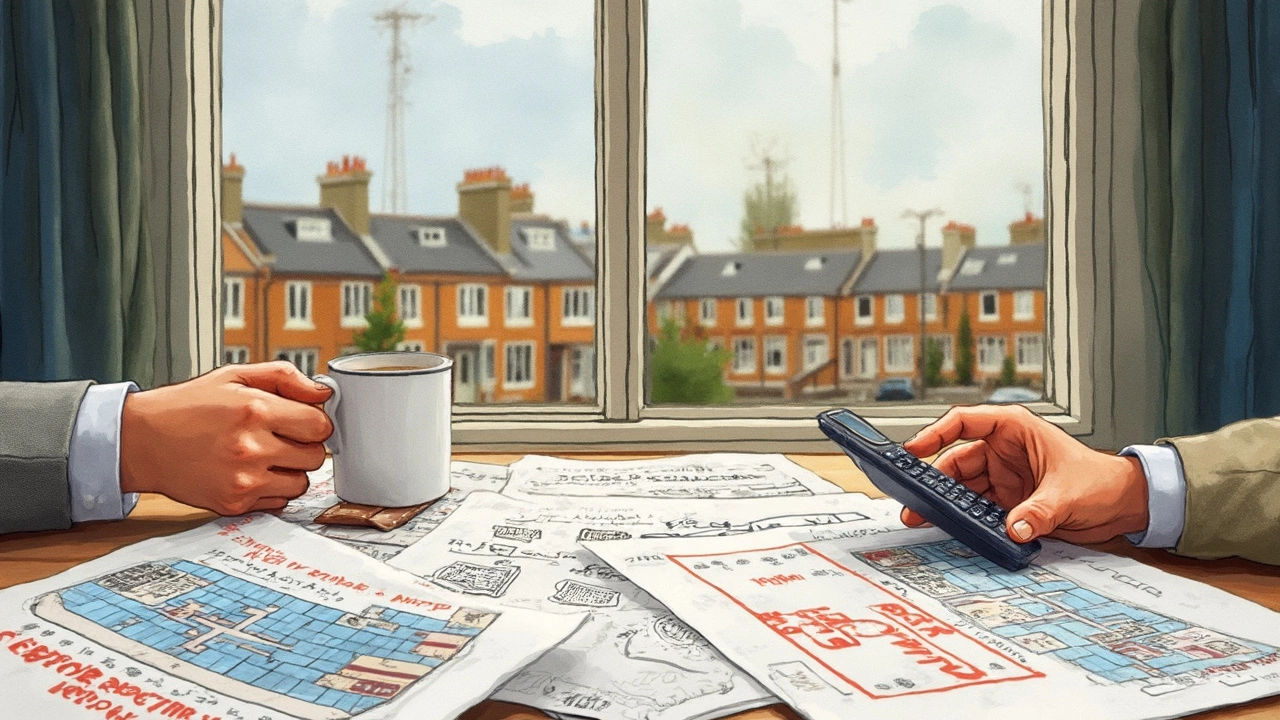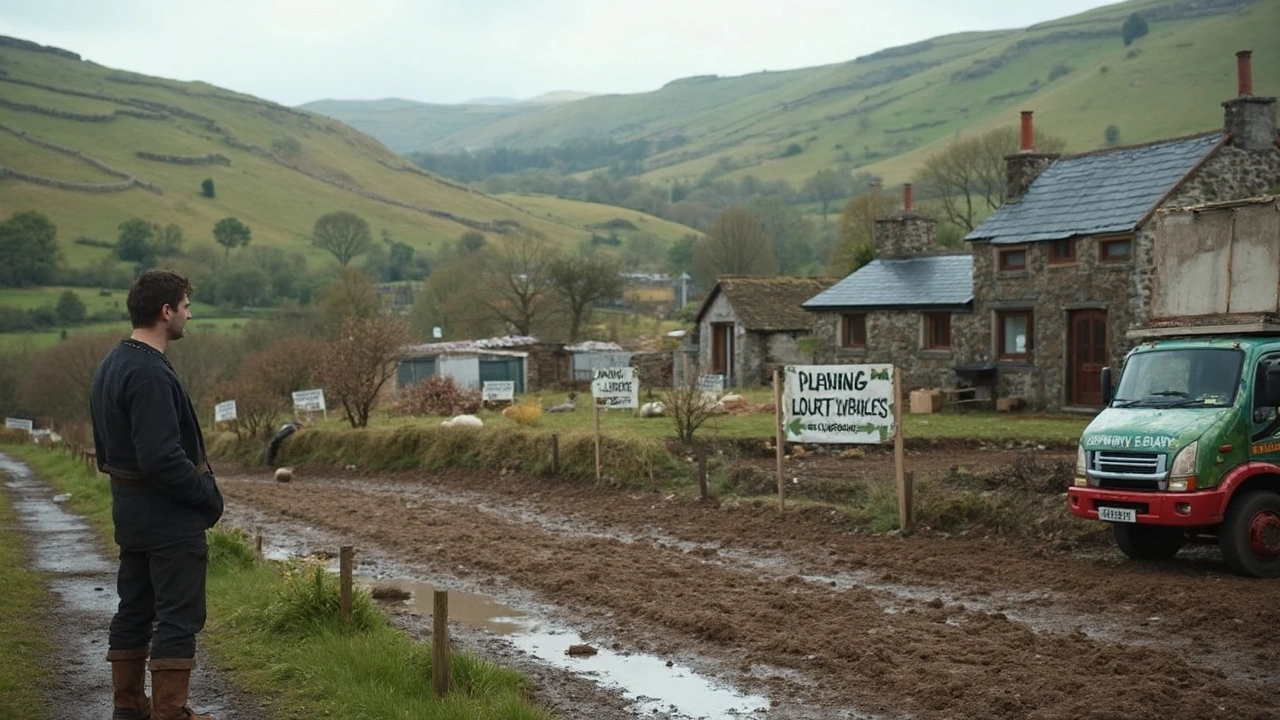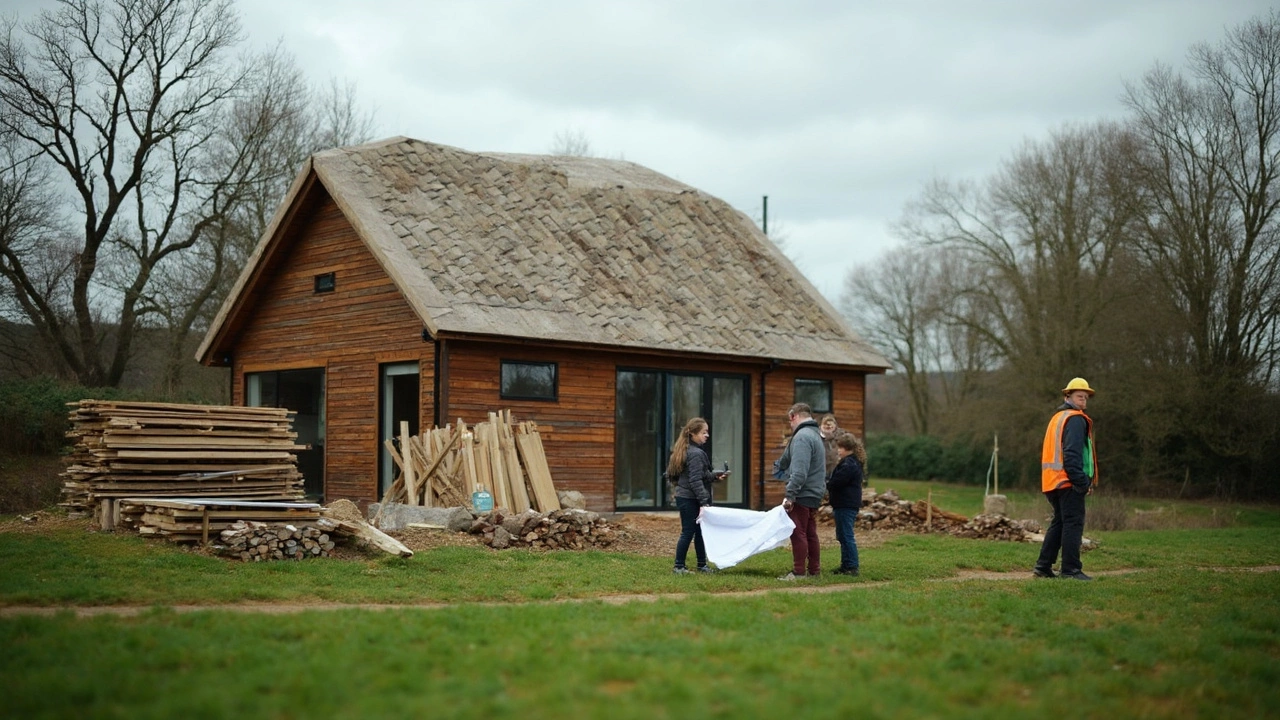Eco-Friendly Home Limitations: What’s Stopping Your Dream Cottage?
13 Jun, 2025So you want to build an eco-friendly cottage, right? I get the appeal—lower bills, lighter footprint, bragging rights. But it’s not as simple as sketching up a tiny house, driving a few posts, and calling it a day. Before you start imagining green roofs and rainwater showers, it helps to know about the roadblocks that pop up more often than you think.
First up: the rules. Building codes and zoning laws love to throw a wrench in clever ideas. Want to put up super-insulated straw bale walls? Some municipalities will say yes, others will stare at you like you’ve asked to build a house out of marshmallows. Permits can take forever. You’ll probably have to explain your green systems—over and over—to inspectors who haven’t seen them before.
There’s also the materials game. Sure, there are awesome sustainable options out there, but not all of them are easy to find. If you’re dreaming of something like hempcrete or sheep’s wool insulation, get ready for supply hiccups. And costs can swing like wild, depending on where you live. Sometimes it’s actually pricier to build green upfront, though you’ll probably save cash in the long run.
- Building Codes and Local Rules
- Limits on Materials and Technology
- Location and Environmental Challenges
- Balancing Budget with Green Choices
- Creative Ways Around Common Obstacles
Building Codes and Local Rules
If you’re dreaming of an eco-friendly home, local building codes might be the first reality check. Most towns and counties want to make sure your house won’t fall down, burn up, or mess with everyone else’s water supply. But here’s the problem: a lot of places haven’t updated their rules to keep up with green building trends. That means your fancy composting toilet or straw bale walls could cause some headaches during inspections.
Take for example, solar panels. In sunny states like California, you’re basically required to install them on new builds, and inspectors know what to look for. In parts of the south or Midwest, however, building departments might not have a checklist for solar, so your project can get stuck in permit limbo. Rainwater harvesting? Some cities love it, others put limits on how much rain you can collect off your own roof—seriously.
Want to go off-grid? Some county codes flat-out block it. Many places require you to hook up to city sewer, electrical, or water, even if you want to install your own systems.
- Green materials like hempcrete or recycled steel must meet safety and fire codes, which sometimes aren’t designed for these new products.
- Inspections can take longer because officials might not be familiar with your chosen materials or systems.
- Some rural counties are wide open to new ideas, while others stick to the book—literally, the International Residential Code (IRC) or local amendments.
If you’re planning your build, call the local planning office before you buy land. Ask them these key questions:
- Are there materials or systems that aren’t allowed here?
- How do you handle permits for green tech like solar panels, greywater reuse, or composting toilets?
- Are there area minimums, max heights, or setbacks that might affect small homes or additions?
- What’s the average time for getting building approvals?
Check out the real numbers: For example, in Oregon, wait times for green building permits can be three times longer than standard homes. That’s weeks or even months of just waiting for paperwork.
| State | Permit Wait (Average) | Notable Restrictions |
|---|---|---|
| California | 2-6 weeks | Solar panels now required; rain collection legal in most areas |
| Oregon | 4-12 weeks | Green materials require extra paperwork |
| Texas | 1-8 weeks | Off-grid rules vary county by county |
| New York | 3-10 weeks | Strict on energy code, tough for nontraditional walls |
Big tip: When in doubt, get your plans stamped by a local architect or engineer who knows the green scene. You’ll save loads of time and hassle with inspectors if your plans already meet local requirements.
Limits on Materials and Technology
Dreaming about putting the latest eco gear in your cottage? It sounds easy, but the real world is messier. For starters, not every area has access to the coolest green building materials. While big cities sometimes have showrooms full of eco-friendly options, rural places might have nothing but standard brick and drywall.
Some materials like recycled steel, hempcrete, or bamboo are talked up everywhere online, but try actually ordering large amounts and you’ll see the limits. Shipping costs add up fast. Local suppliers may not even know what you’re talking about. And if it’s an international product, good luck handling fees, customs, and long waits.
Let’s talk technology. High-efficiency heat pumps, greywater recycling, or the latest solar panels? All that depends on available installers. A recent 2024 U.S. survey found most regions only have a handful of pros qualified to set up advanced green systems. Even if you’re ready to pay, finding the right crew sometimes takes months or means training regular contractors yourself.
Building up to strict sustainability standards like LEED or Passive House throws another curveball. If your area doesn’t have much demand, fewer suppliers carry the stuff you need—triple-glazed windows or non-toxic paints, for example. Plus, some of the new tech isn’t compatible with older local infrastructure, so connecting your high-tech rainwater system to a regular city grid can cause headaches.
- Check local suppliers before making your shopping list.
- Ask about delivery times and extra shipping costs. These can add weeks to your project.
- Look for experienced installers early. It’s worth calling around before you buy expensive tech.
- Not every green gadget is worth it if you can’t service or repair it nearby.
If you want your eco-friendly home dream to run smooth, logistics matter just as much as visions. Keep it practical and stay flexible—you’ll be grateful for it when the build really gets going.

Location and Environmental Challenges
The spot you pick for your eco-friendly home can cause a lot more headaches than you might expect. Let’s start with the weather—crazy heat, deep cold, lots of rain, and strong winds all mess with your building plans. Living in a super-humid area? Mold can become a real battle, even if you use the best insulation. If you’re aiming for solar panels, heavy tree cover or mountains can block out the sun, making those panels a lot less useful and forcing you to rethink your energy setup.
Flood risk is another thing folks don’t always consider. A 2023 FEMA update put over 23.5 million properties in the U.S. at some flood risk, including spots far from any river. Building codes might demand your house to be on higher ground or use special foundations—sometimes adding thousands to your costs.
If you’re eyeing rural land, water rights and waste disposal often trip people up. Some states make it pretty hard to dig your own well or install composting toilets. You don’t want to sink a bunch of cash into a property, then find out you can’t have plumbing or sustainable sewage—happens more than you’d think.
Wildfires, too. In California, some insurance companies flat-out refuse coverage on new builds in wildfire-prone zones. Fire-resistant materials might become a must, but those can stretch your budget fast. Now let’s look at a few numbers from actual problems people run into:
| Challenge | Impact | Data (2024) |
|---|---|---|
| Solar access blocked | Reduced panel output by up to 50% | Avg. 38% of rural homes report partial sun loss |
| Flood zone costs | Extra site work or insurance | $5,400 average added cost per build |
| Fire zone restrictions | Higher material/insurance costs | 17% hike for eco cottages in risk areas |
Local wildlife rules are another curveball. Some areas restrict how much you can clear or build to protect animal habitats, meaning your dream garden might stay wild, or your layout has to shift. Always, always double-check the local rules before dropping a deposit. A little research now saves a lot of pain later.
- If you want that eco-friendly home to actually perform, do a sun study before you build. Apps like Sun Surveyor help show how much light you’ll really get.
- Map out the site after heavy rain. Where the puddles form now is where you’ll face problems later.
- Talk to locals—they know which critters, pests, or floods hit hardest. Nothing beats fresh stories from people already living there.
Balancing Budget with Green Choices
Sticking to a budget while aiming for an eco-friendly home is like walking a tightrope. Everyone hears stories about how going green is expensive, but it really comes down to choices, trade-offs, and planning. If you want the real truth, a lot of big-ticket green features pay off later. Solar panels, for example, can slash your energy bill by 40-70% a year, but you’ve got to fork over a chunk of cash up front. Not everyone has $15,000 just hanging out for a solar system, even with tax credits.
The trick is figuring out where you get the biggest bang for your buck. Here are some ways to keep costs under control without ditching your green goals:
- Start with the basics: Good insulation—like cellulose or mineral wool—can cut heating and cooling needs by about 20% without pricey tech.
- Focus on energy hogs: Swapping out old windows, upgrading to an ENERGY STAR rated heat pump, or fixing air leaks will deliver more savings than fancy gadgets.
- Phase your build: You don’t have to do it all at once. Tackling one green upgrade a year—solar first, rainwater collection next—spreads out the cost.
- Hunt for rebates: Many states and utilities will kick in rebates or tax breaks for eco-friendly materials or systems. For instance, the U.S. federal solar tax credit (Investment Tax Credit) gives a 30% break for solar installs through 2032.
- Buy used or salvaged: Reclaimed wood and secondhand materials can save money and reduce your environmental footprint.
It also matters where you live. Take a look at how green building costs stack up in different regions:
| Region | Typical Extra Cost for Green Build | Payback Period (Years)* |
|---|---|---|
| California | 10-15% | 8-10 |
| Northeast US | 7-12% | 9-12 |
| Southeast US | 5-10% | 6-9 |
| Midwest | 8-13% | 10-14 |
*Based on reduced utility and maintenance bills for an average new single-family home
The bottom line: a eco-friendly home costs more upfront, but most people make their money back—and then some—over time with lower bills and sometimes higher resale value. You can go green on a budget if you stay sharp, cherry-pick your upgrades, and grab every rebate and tax break you can find.

Creative Ways Around Common Obstacles
Running into roadblocks when building your eco-friendly home is basically a given, but smart workarounds are out there. The trick is to mix resourcefulness with a bit of DIY attitude—and know where to compromise without trashing your whole green vision.
- Buddy up with local pros: Architects and contractors who’ve already dealt with green building headaches know the shortcuts. They might have contacts for finding recycled materials or know which inspectors are open-minded about new tech.
- Educate, don’t just negotiate: Local officials often push back because they’re not familiar with new products or systems. Show up with real info—case studies, third-party certifications, safety data. In one Oregon county, homeowners who brought legit test results for rammed earth walls sped up their permit approval by 30% compared to those who didn’t.
- Mix old and new: Can’t get official sign-off for 100% rainwater use? Start with a backup connection to the grid, then switch over bit by bit. Solar panels combined with battery backup keep utility inspectors happy but give you the freedom to use more clean energy when you’re ready.
- Share materials with other builders: Finding green stuff like FSC-certified lumber or recycled glass in bulk can be tough. See if other folks nearby want to split big orders—saves money and shipping miles.
- DIY some finishes: Hiring out for every single job will eat your budget. Stuff like clay plasters, upcycled fixtures, or garden paths are well within most DIYers’ reach. There’s a huge online community sharing step-by-step tutorials for free.
Ever wondered how much these strategies actually help? Check out this data from a 2024 survey of small green builds in North America:
| Strategy | Average Cost Savings | Approval Time Reduced |
|---|---|---|
| Hiring green-savvy pros | $7,200 per project | 2.5 weeks |
| Joint material purchases | $3,150 per project | Not measured |
| DIY finishes | $2,900 per project | Not measured |
| Educational handouts for officials | Not measured | 1.8 weeks |
No single hack solves everything, but stack up a few of these tactics and suddenly those "impossible" problems feel a lot more manageable. Keep your core goals in sight, but be willing to pivot—that’s where the real wins happen.

 by
by